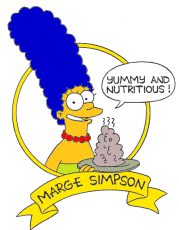
Naively, I used to believe that making your site accessible and valid were just “no brainers”. However, my experience over the past few months has taught me that there are just enough conflicts between Valid HTML and Accessibility to make this quite a challenge.
Let me be 100% clear, that when forced to choose between accessibility and validity, I choose accessibility. No question. But that is my short-term answer. My long-term answer is…let’s get accessibility and validity to agree!
I really resonate with the mission of all of those who are working on web standards. When asked this week to explain why valid HTML was important, I responded:
To make the web work the way it should really work we need to focus on three mechanical things:
- We need to write and serve good code.
- We need tools that help us (and don’t prevent us) from producing good code.
- Browsers and Screenreaders (and other user tools) need to handle good code accurately.
I’m thrilled with the progress I’m seeing in all three of these areas…and yet we still have quite a long way to go. But hey, isn’t that what makes this all so very satisfying? I love a good challenge. Especially when conquering that challenge has such a substantial payoff.
What is the payoff for baking, serving and being nourished by good code? Time and yummy content and functionality. Imagine the world in 5 years. It is 2010. Validity and Accessibility have been friends for years. You can’t remember the last time you discovered one of your pages didn’t meet standards. With the time you used to spend coding for non-compliant software, you’ve been 30% more productive. You used that time wisely to create content and applications that enriched the lives of other people.
Blink. Daydream over. It is still 2005. How can I make a difference today? Here is my personal list:
- Produce accessible and valid code. When I find that accessible and valid are in conflict. Document the issue and let the W3C and the Web Standards Project know about my struggle.
- Help others produce accessible and valid code. Teach classes. Document techniques. Offer assistance.
- Proactively ask others to produce accessible and valid code. Friends, co-workers, colleagues and software vendors. Ask each of these groups as though they were my very best friend.
- Dream about the tools we need to make this process really work. I’ve already got my first wish. I wish the W3C HTML Validator offered manual checks on items that create accessibility issues. And I can’t just blog about it here; I’ve got to ask the W3C directly!